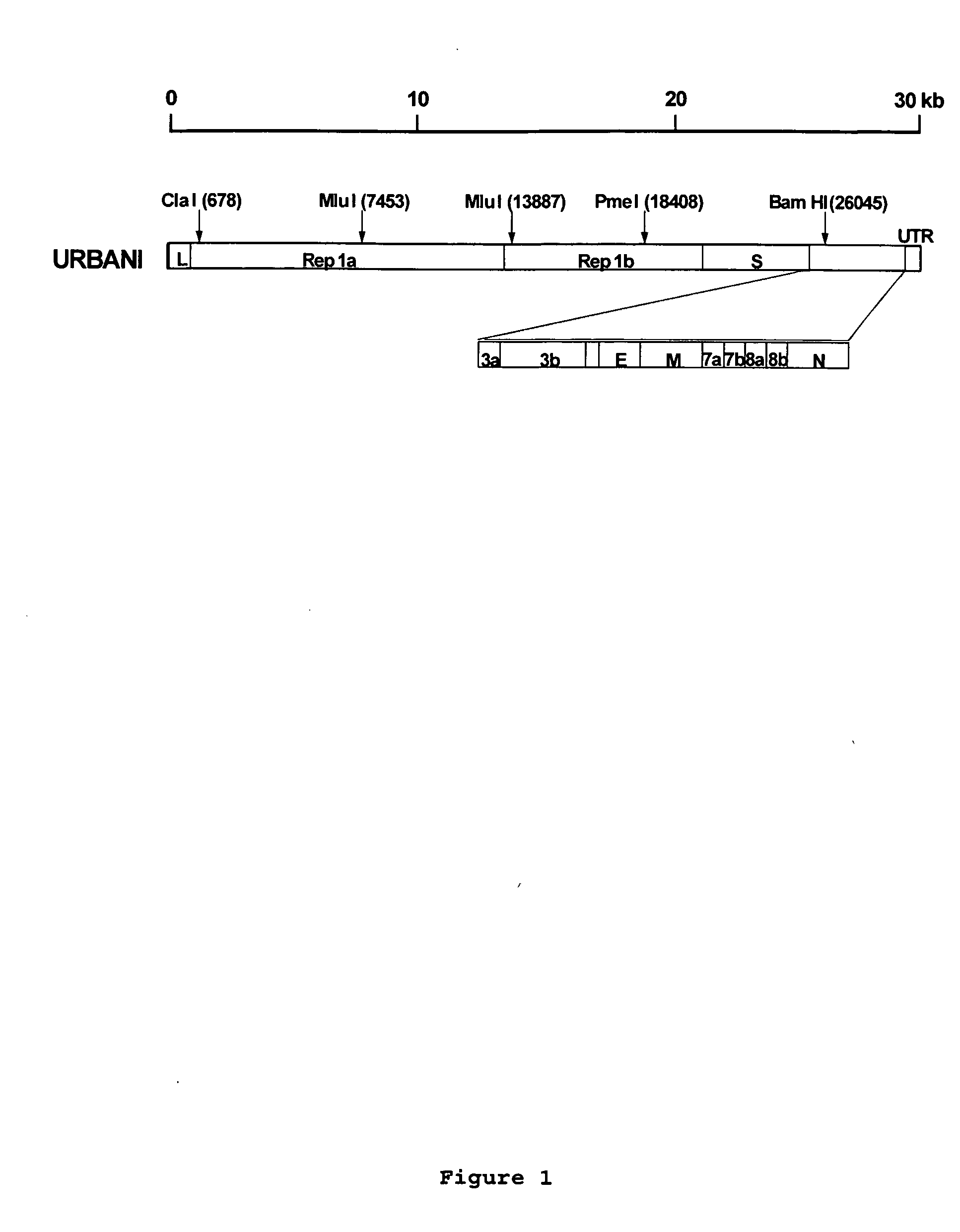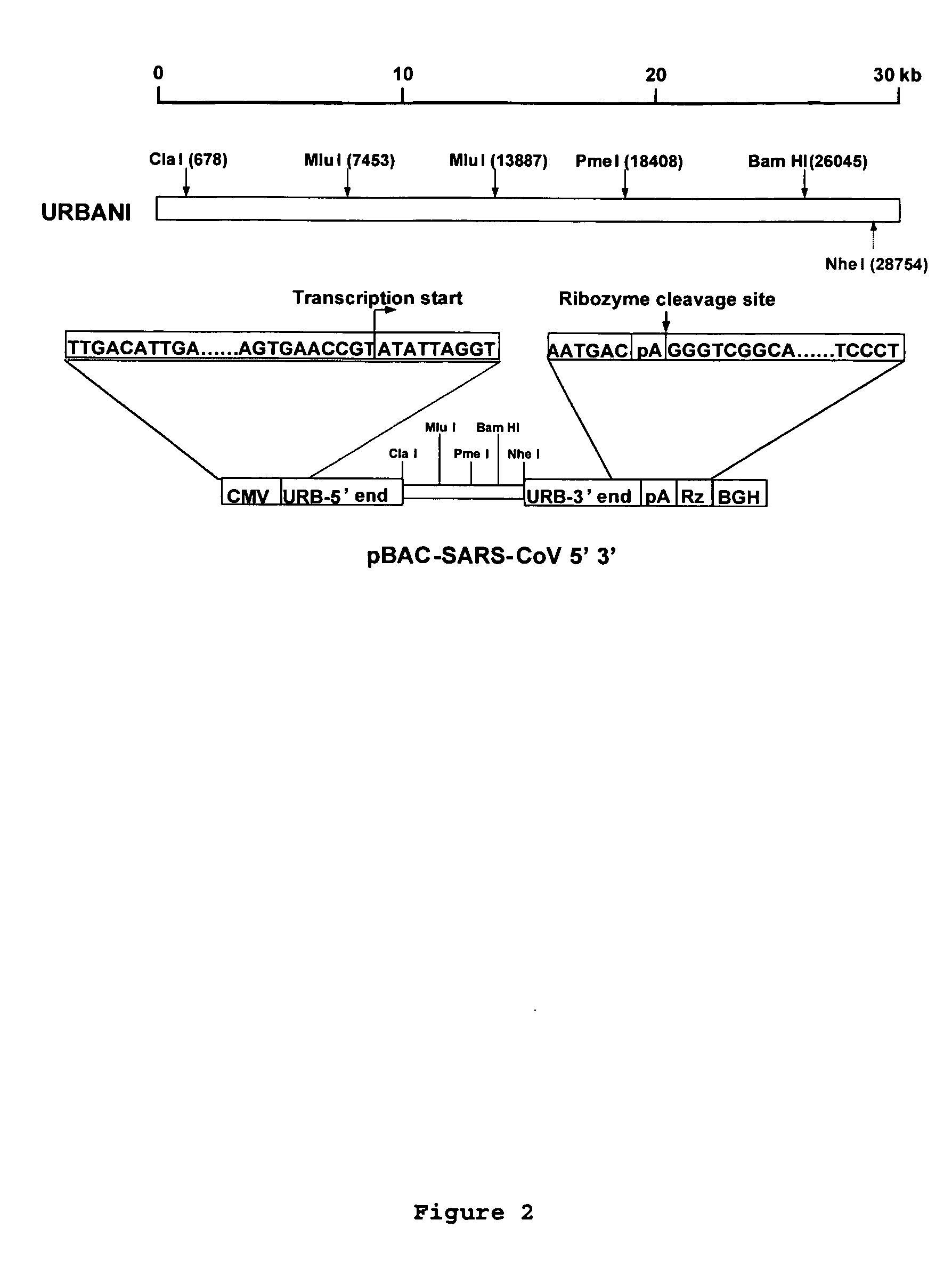SARS vaccine
a technology of sars and vaccine, applied in the field of vaccine, can solve the problems of high mortality rate and global threat of sars, and achieve the effect of reducing or eliminating disease symptoms
- Summary
- Abstract
- Description
- Claims
- Application Information
AI Technical Summary
Benefits of technology
Problems solved by technology
Method used
Image
Examples
example 1
Construction of a SARS-CoV Replicon cDNA
[0075] A cDNA that contained the untranslated 5′ and 3′ end of the Urbani genome and the replicase and N genes, was cloned as a BAC under the control of a CMV promoter.
[0076] Additionally, a multicloning site containing unique restriction sites Pac I, Asc I, and Bam HI, was cloned downstream of the replicase gene to allow cloning of heterologous genes (FIG. 3). This approach use a two-step amplification system that couples replicon RNA transcription in the nucleus from the CMV promoter with a second amplification step in the cytoplasm driven by the viral polymerase. The plasmid pBAC-SARS-CoV-REP, encoding the SARS-CoV replicon, was stable for at least 180 generations during its propagation in DH10B cells, as determined by restriction endonuclease analysis.
[0077] In a first step the appropriate restriction sites in the viral genome that can be used in the engineering of the replicon were identified (FIG. 1).
[0078] In a second step the inter...
example 2
Analysis of Cloned cDNA Stability
[0080] The stability of the viral sequences cloned into pBeloBAC11 was analyzed by studying the restriction endonuclease pattern at different passages. Bacteria transformed with recombinant plasmid were grown in 10 ml of LB containing 12.5 μg / ml chloramphenicol at 37° C. Cells from these primary cultures (considered passage 0) were propagated serially by diluting 106-fold daily. Each passage was considered to represent about 20 generations.
example 3
[0081] DNA was sequenced using an automatic 373 DNA sequencer (Applied Biosystem) using fluorochrome labeled dideoxynucleotides and temperature resistant DNA polymerase (Perkin Elmer).
PUM
| Property | Measurement | Unit |
|---|---|---|
| structure | aaaaa | aaaaa |
| genomic structure | aaaaa | aaaaa |
| length | aaaaa | aaaaa |
Abstract
Description
Claims
Application Information
 Login to View More
Login to View More - R&D
- Intellectual Property
- Life Sciences
- Materials
- Tech Scout
- Unparalleled Data Quality
- Higher Quality Content
- 60% Fewer Hallucinations
Browse by: Latest US Patents, China's latest patents, Technical Efficacy Thesaurus, Application Domain, Technology Topic, Popular Technical Reports.
© 2025 PatSnap. All rights reserved.Legal|Privacy policy|Modern Slavery Act Transparency Statement|Sitemap|About US| Contact US: help@patsnap.com



